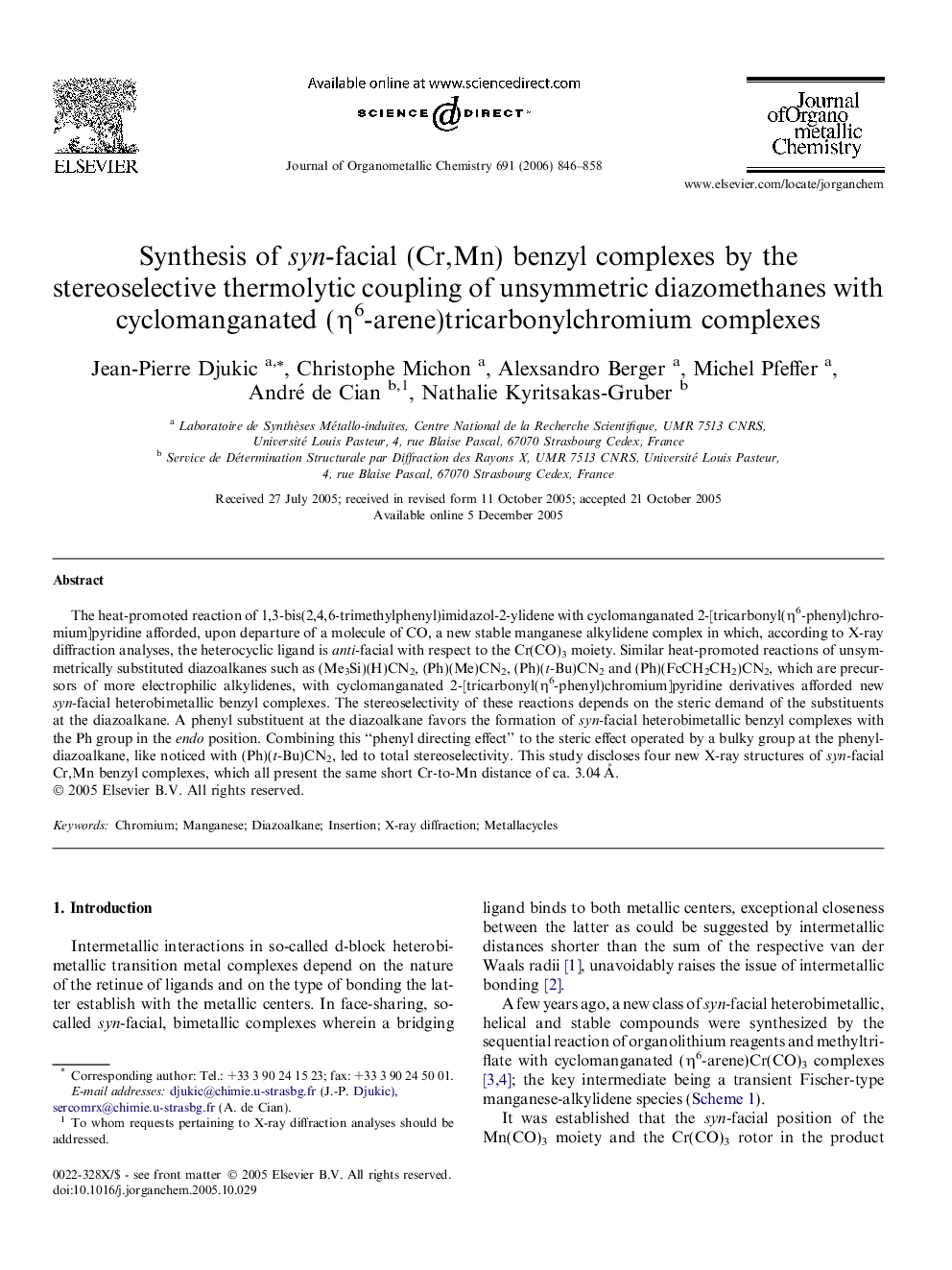| Article ID | Journal | Published Year | Pages | File Type |
|---|---|---|---|---|
| 1327641 | Journal of Organometallic Chemistry | 2006 | 13 Pages |
The heat-promoted reaction of 1,3-bis(2,4,6-trimethylphenyl)imidazol-2-ylidene with cyclomanganated 2-[tricarbonyl(η6-phenyl)chromium]pyridine afforded, upon departure of a molecule of CO, a new stable manganese alkylidene complex in which, according to X-ray diffraction analyses, the heterocyclic ligand is anti-facial with respect to the Cr(CO)3 moiety. Similar heat-promoted reactions of unsymmetrically substituted diazoalkanes such as (Me3Si)(H)CN2, (Ph)(Me)CN2, (Ph)(t-Bu)CN2 and (Ph)(FcCH2CH2)CN2, which are precursors of more electrophilic alkylidenes, with cyclomanganated 2-[tricarbonyl(η6-phenyl)chromium]pyridine derivatives afforded new syn-facial heterobimetallic benzyl complexes. The stereoselectivity of these reactions depends on the steric demand of the substituents at the diazoalkane. A phenyl substituent at the diazoalkane favors the formation of syn-facial heterobimetallic benzyl complexes with the Ph group in the endo position. Combining this “phenyl directing effect” to the steric effect operated by a bulky group at the phenyldiazoalkane, like noticed with (Ph)(t-Bu)CN2, led to total stereoselectivity. This study discloses four new X-ray structures of syn-facial Cr,Mn benzyl complexes, which all present the same short Cr-to-Mn distance of ca. 3.04 Å.
Graphical abstractThe stereoselectivity of the coupling reaction of 1-phenyldiazomethanes with cyclomanganated (η6-arene)Cr(CO)3 substrates, which affords new syn-facial bimetallic benzyl complexes, is mostly controlled by electronic and steric effects.Figure optionsDownload full-size imageDownload as PowerPoint slide
